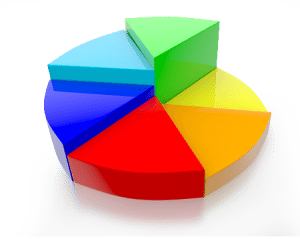Survey Reporting
After the survey is conducted, the next step is to analyze the survey responses and present the collected data. This is done through survey reporting. Dealing with survey data involves carrying out an accurate analysis of the obtained information, which will let you to accurately define and understand the results. Generally, there are five steps involved in analyzing the survey data: data validation, response partitioning, coding, standard analysis, and ordinal and nominal data analysis.
 Data Validation
Data Validation
During data validation, researchers make sure that all queries in the survey have been answered and that the questionnaires present logical data. It should be noted that survey questions that were not answered by majority of surveyees shall not be incorporated in the data analysis for it may result to a biased survey. For cases of unfulfilled questionnaires, the total number of respondents who were not able to complete the question must be identified and taken into account.
Response Partitioning
Stratifying the responses via homogenous subgrouping induces a rapid and more straightforward data analysis. Response partitioning divides the participants’ answers into subgroups based on geographical data, race, age, etc. For example, you are interested in correlating the responses of men aged 20-30 with the answers of men aged 31-40.
Data Coding
Before the survey data are digitized, data coding takes place. In here, responses are sorted depending on the classification. To illustrate this, let us say that responses related to brand awareness are codified under the “Brand Awareness” classification. This phase is typically conducted when the questionnaire is being designed or structured. Be that as it may, data codes start to be beneficial and convenient during data processing.
Standard Data Analysis
Basically, the two main aspects that impact the mode of data processing during surveys are the response formats or the survey response options, and the employed technique in collecting data. The role of standard data analysis is to calculate the proportionality and standard errors that arise due to the aforementioned factors.
Analyzing Nominal and Ordinal Data
Thanks to statistical equations, numerical survey data can be easily dealt with and directly examined. But for nominal and ordinal data, the use of scales are used coupled with ( ‘a’ missing?) statistical method such as Spearman’s rank correlation to gauge the relationship between the scale variables.
Data Cleaning, Editing, and Analysis
When editing survey responses, one must be careful not to modify or exclude the data in a manner that may lead to a biased outcome. Although survey data can be edited as soon as the results are obtained, it is suggested to stand by until all the responses are received.
In cleaning survey data, look for and remove responses that are deficient and matching. The views of survey participants that are insignificant and do not make sense must be rejected. For instance, a participant was asked to answer questions related to demographics but failed to do so. The response should be excluded from the group. However, if the respondent forgot to write his or her name, age, or location – factors that have no impact on the survey topic – the response will then have to be included.
Data analysis is an integral aspect of every survey. After obtaining the responses, the next step is to turn them into usable information. During this phase, utmost attention and thorough examination must be observed for errors may occur, which will result to costly decisions. What will eventually happen during this stage will tell if the survey is a success or not.
Survey Reporting
Survey reporting is the most vital and significant part of the survey process since it will convey your findings to decision makers and marketers. In general, a survey report contains a brief research background, the survey data, and conclusions and recommendations.
Survey Background
Good survey reporting defines its research background. Since most survey data are presented to consumers and other decision-makers, not only the basis of the research has to be established well and clearly defined, but also the goals, methods used, research findings, and conclusion and recommendations. In doing so, include the reasons or considerations that drive the survey. This will help the end users of the survey report to comprehend why was the survey administered in the first place and the significance of the survey’s outcome. In addition, clearly enumerate your goals and objectives that you wish to attain. Record the goals that you first set prior to the survey process and all the objectives, even those that were not achieved. Moreover, specify and demonstrate in detail the data collection process. What was the technique used in data gathering? Aside from this, put emphasis on your research findings. Incorporate all important data, even the ones that are a bit odd and unexpected. Furthermore, do not forget to include a brief summary of the survey and the conclusion and suggestions.
Survey Presentation
An engaging and effective report has charts, tables, graphs, and descriptive texts. In today’s technological age, researchers use survey software not only in conducting surveys,( unnecessary comma) but also in processing survey data and in presenting them. Through survey software, marketers and researchers are provided with real-time reporting and analysis in different layouts and forms. In addition, survey reports can now be exported to different file formats and be sent in just one click.
